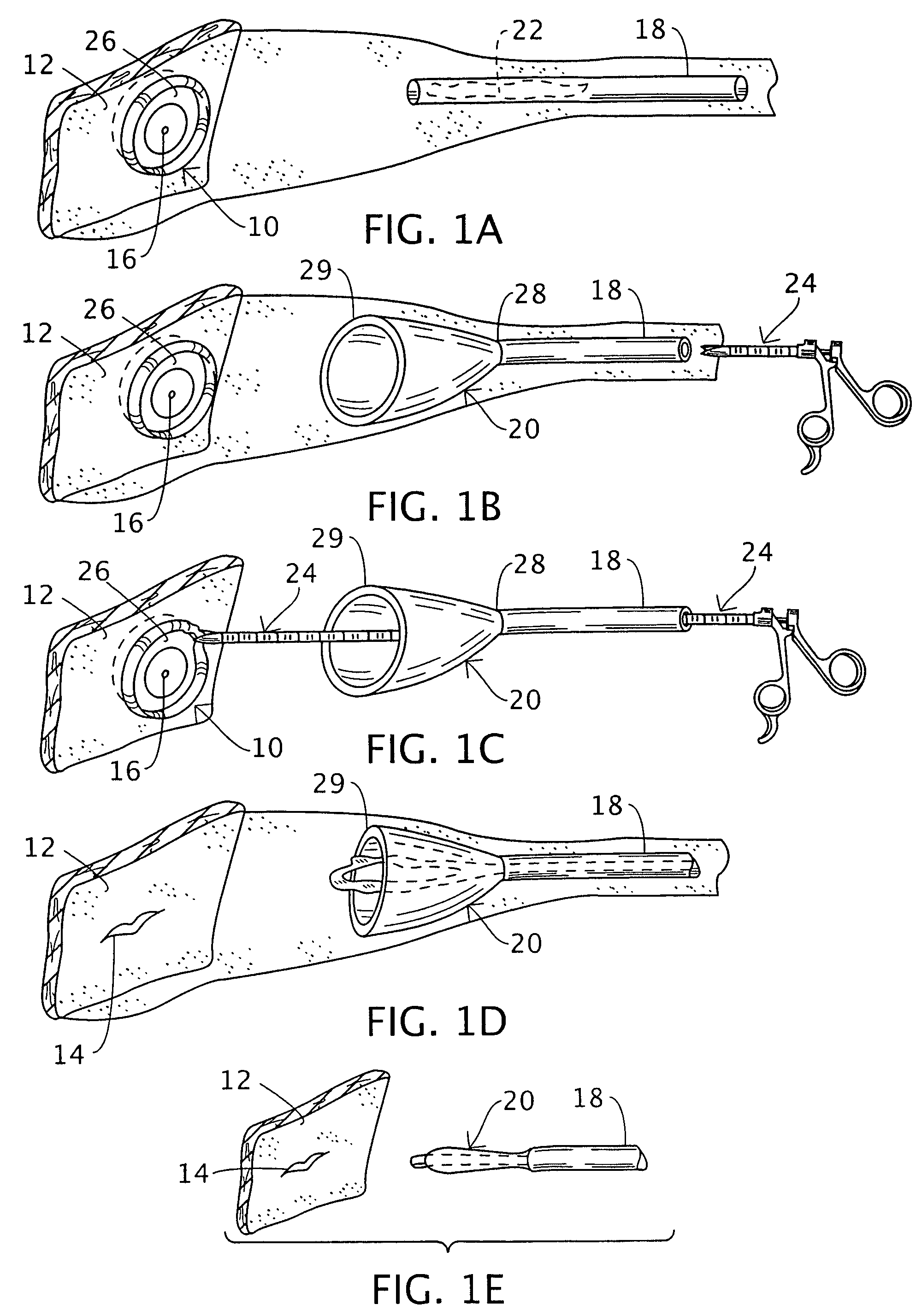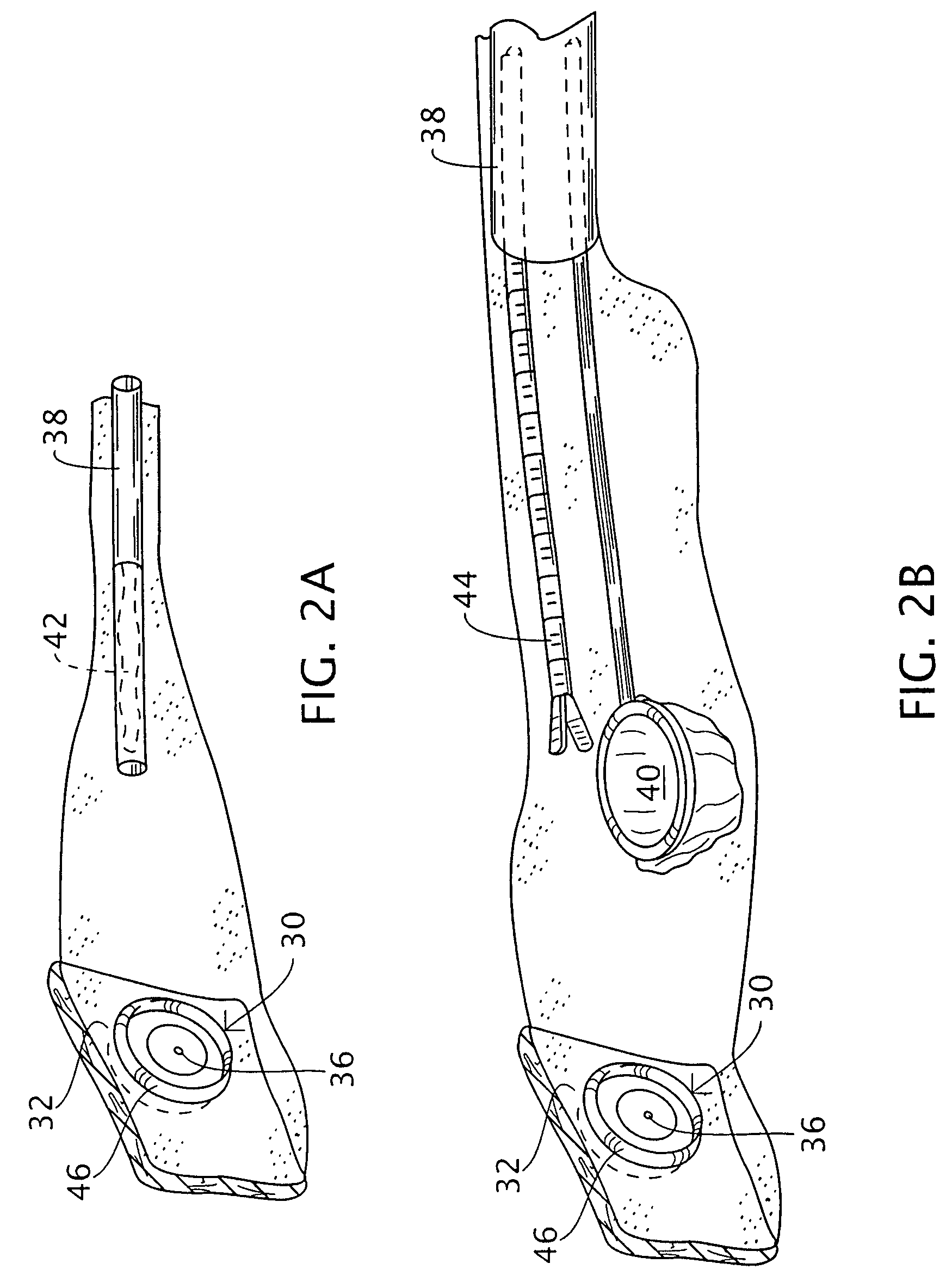Port extraction method for trans-organ surgery
- Summary
- Abstract
- Description
- Claims
- Application Information
AI Technical Summary
Benefits of technology
Problems solved by technology
Method used
Image
Examples
Embodiment Construction
[0024]FIG. 1A depicts a port device 10 attached to a wall 12 of a hollow internal organ to facilitate a passage of elongate surgical instruments through the organ and the wall for the performance of a surgical operation on internal body tissues outside of the organ. The organ communicates with a natural body opening such as the mouth, vagina, colon, or urinary bladder. Such procedures are described in U.S. Pat. Nos. 5,297,536 and 5,458,131.
[0025]Port element 10 is disposed in an incision or perforation 14 (FIG. 1E) formed in organ wall 12. Distal end portions of elongate surgical instruments are inserted through the natural body opening (not shown) and an aperture 16 in the port element 10 and concomitantly through the incision or perforation 14 into an internal body cavity such as the abdominal cavity. Subsequently, after the termination of the intra-abdominal operation and the withdrawal of the trans-organ surgical instruments from the patient through aperture 16, the hollow inter...
PUM
 Login to View More
Login to View More Abstract
Description
Claims
Application Information
 Login to View More
Login to View More - R&D
- Intellectual Property
- Life Sciences
- Materials
- Tech Scout
- Unparalleled Data Quality
- Higher Quality Content
- 60% Fewer Hallucinations
Browse by: Latest US Patents, China's latest patents, Technical Efficacy Thesaurus, Application Domain, Technology Topic, Popular Technical Reports.
© 2025 PatSnap. All rights reserved.Legal|Privacy policy|Modern Slavery Act Transparency Statement|Sitemap|About US| Contact US: help@patsnap.com



